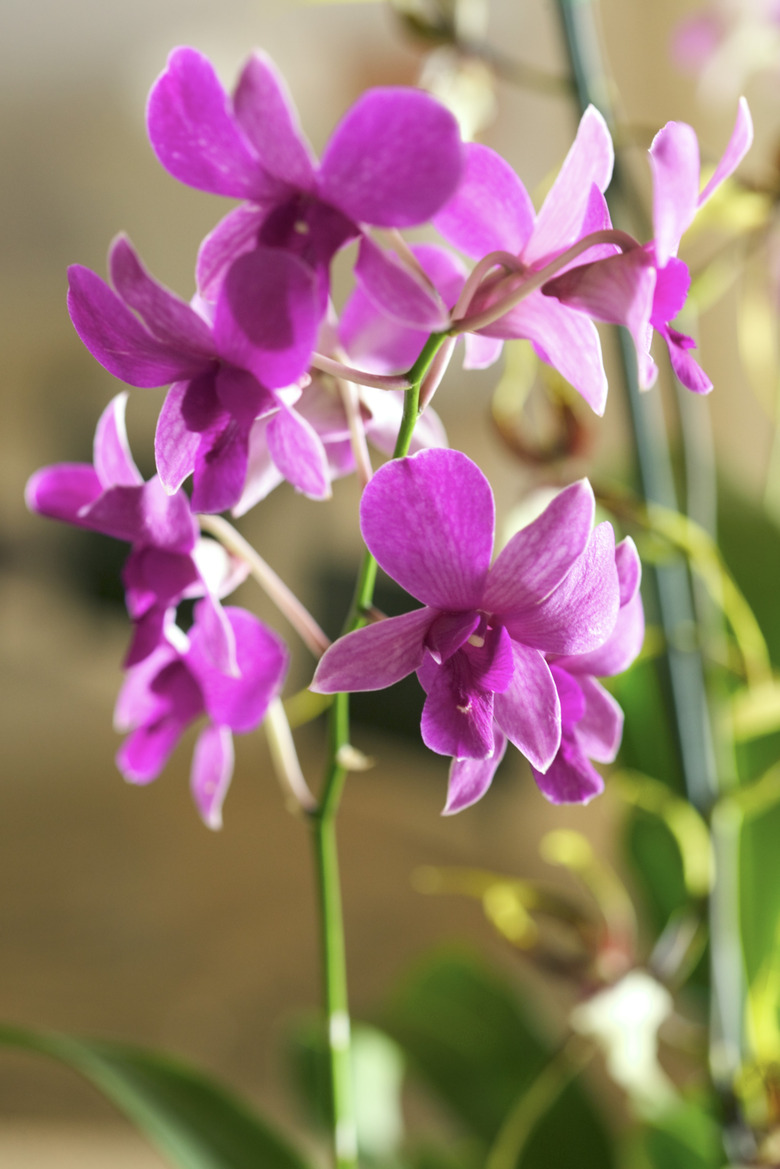How To Clone Orchids
Orchids are known for their beautiful, aromatic flowers. They are originally from tropical regions, but can grow in most places with the proper care. Like other plants, you can clone orchids through a method called propagation.
Step 1
Mix a solution of 1 part bleach to 3 parts water and use it to clean the razor blade or knife you're using to cut the orchid stem and the pots that the new orchids are being planted in.
Step 2
Put on clean gloves or wash your hands to avoid contaminating the orchid.
Step 3
Cut a 12-inch-long stem from the plant, then cut the 12-inch section into smaller parts that are 3 to 4 inches long. When cutting the stem into smaller sections, make sure that each one has at least one dormant bud on it.
- Orchids are known for their beautiful, aromatic flowers.
- Mix a solution of 1 part bleach to 3 parts water and use it to clean the razor blade or knife you're using to cut the orchid stem and the pots that the new orchids are being planted in.
Step 4
Lay the cut stems onto damp sphagnum moss. Move the stems and moss to a place that is shaded and humid, leaving them there until small plants begin to emerge from the buds.
Step 5
Place standard orchid compost into the pots, then plant the new orchids into the pots.
Step 6
Apply a 10-10-10 fertilizer to the soil.
Step 7
Place the plants into a humid, well-lit area where they will receive 12 to 14 hours of light every day. Water the orchids once a week.
Care For Orchids
An orchid is not just another pretty face. Light, humidity, temperature, water and fertilizers all play important roles in an orchid's health and vigor. High-light-loving orchids need unobstructed sunlight. Low light orchids, like jewel orchids, need a limited northern exposure or another exposure where the light is blocked by something like a tree. Some orchids like it warm, some like it cold. Many like it intermediate. You may never match the humidity of the tropics, but you can keep your orchids happier by boosting the humidity in their immediate growing area. Group your potted orchards on top. Was irrigation ever so complicated as it is for orchids? Use this technique for orchids in a clay plot, because clay lets in water. For orchids in plastic pots, add the pot to the bowl before you put in the water. You should water your orchid once every four to seven days. Drought-tolerant orchids, such as cattleyas, oncidiums, and dendrobiums should get water once a week.
- Lay the cut stems onto damp sphagnum moss.
- Low light orchids, like jewel orchids, need a limited northern exposure or another exposure where the light is blocked by something like a tree.
Things Needed
- Bleach
- Water
- Razor blade or knife
- Pots
- Gloves
- Damp sphagnum moss
- Standard orchid compost
- 10-10-10 fertilizer
